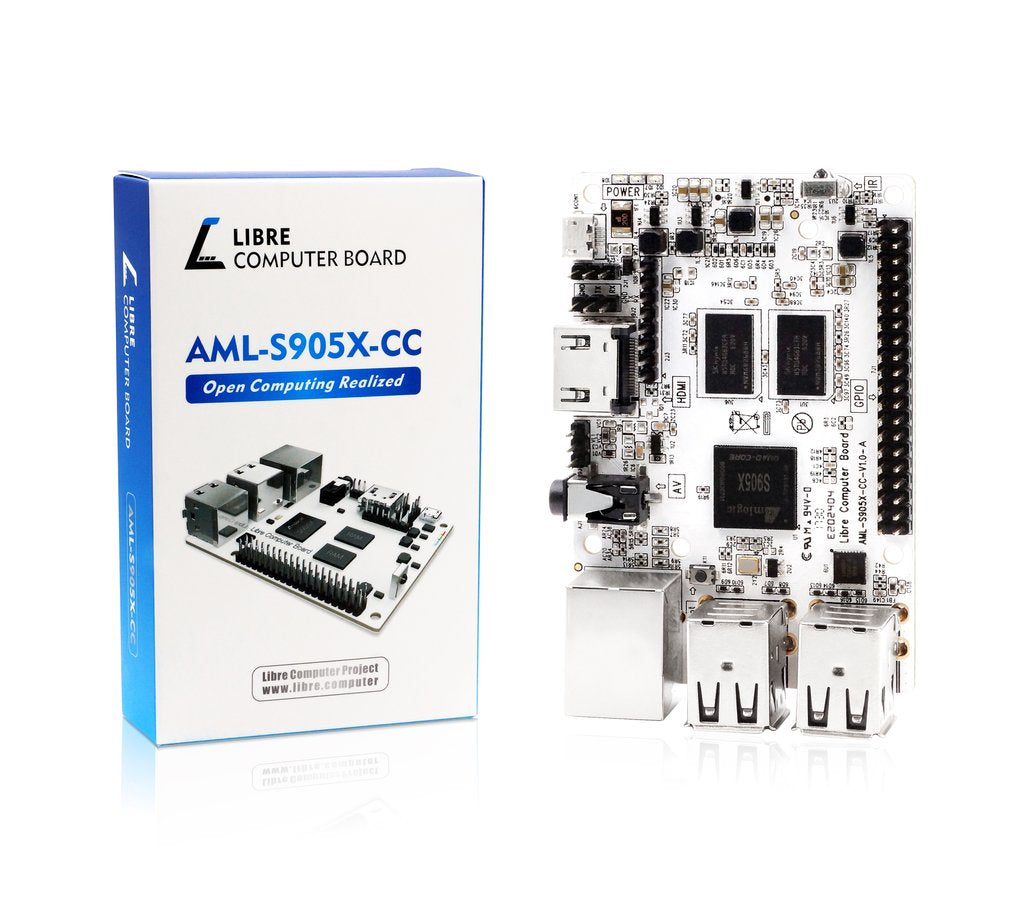
First Look at Libre Computer Board AML-S905X-CC (Le Potato) - Hardware OVerview
Share
Welcome to the first look video for the Libre Computer Board AML-S905X-CC. In this video we will be going over the hardware features and comparing them to the Raspberry Pi 3 Model B. We will have a full review going over the software features of the board at a later point.
This new single board computer is the first 64-bit 4K board at Raspberry Pi 3's $35 price point. We need to stress that this is not a Raspberry Pi board and will not be compatible with Raspberry Pi software without modification.
This board is designed to be form factor compatible with cases built for the Raspberry Pi 3. It features the same external connectors, placement, and board thickness for nearly complete compatibility.
It offers the same external connectors like 4 USB ports, RJ45 ethernet, CVBS AV jack with composite video and stereo audio out, HDMI out Interface, MicroUSB Power input, 40 pin GPIO header, and MicroSD card slot.
Unlike the Raspberry Pi 3, this board has no onboard wifi or bluetooth so we recommend using a USB dongle. They generally offer better compatibility, higher performance, and only cost a few bucks. It doesn't have the camera interface for attaching that Raspberry Pi Camera but you can use USB webcams which are well supported in software. The other missing feature is the DSI connector for the Raspberry Pi 7 Inch Touchscreen. In leiu of that, you get a HDMI 2.0 interface that supports true 4k at 60 frames with HDR.
Now lets go over the features that this board brings to the table. This board offers a SPDIF header, separate UART header for serial console, ADC in and i2s out header for analog and digital audio, IR receiver, and eMMC connector reverse side for superfast storage up to 128GB.
Lets compare the Raspberry Pi 3 and AML-S905X-CC side by side. The Raspberry Pi 3 has quad 64-bit ARM Cortex-A53 cores running at 1.2GHz. The AML-S905X-CC has the same quad ARM Cortex-A53 cores with the optional Crypto Extensions running at 1.5GHz. It is 20x faster than the Raspberry Pi 3 for encryption and decryption workloads. Power consumption is half that of the Raspberry Pi 3 at the same performance level. AML-S905X-CC's RAM chips run twice as fast at 2133MHz instead of 1066MHz and comes in a 2GB model for twice the memory. This is a huge boost for running applications that requires faster and/or more memory.
On the backside, we have the spring loaded MicroSD card slot for easier removal of MicroSD cards on the AML-S905X-CC. This MicroSD card slot also supports UHS which the Raspberry Pi 3 doesn't. Without UHS, you don't get the benefits of faster MicroSD cards like the Samsung Pro and Sandisk Extreme lines. Instead of 75MB/s, You are limited to 25MB/s on the Raspberry Pi 3.
You may also notice the eMMC connector on the back side. AML-S905X-CC supports the eMMC 5.x standard with HS400. You can read and write at speeds exceeding 100MB/s with the appropriate modules. eMMC is also far more reliable than MicroSD cards in long running applications and you can get them with up to 128GB of storage along side MicroSD cards.
Another IO issue to mention is that the Raspberry Pi 3 shares bandwidth between the Ethernet and all four USB ports. You are limited to 280Mb or 35MB/s of aggregated bandwidth. That means if you are copying files from one drive to the other, the fastest you can do it is at 18MB/s. On the AML-S905X-CC, Ethernet bandwidth is dedicated and there's two USB channels. The port closest to the ethernet jack on the bottom has full bandwidth and the remaining three share bandwidth. That means it performs more twice as fast on USB IO applications.
Other great features include the IR receiver. You can set the IR receiver to wake the board up with remotes provided you set the software bits up. The GPU can decode H.264 H.265 and VP9 codecs at 4K while the Raspberry Pi 3 can only decode 1080P60 H.264 with no support for H.265 or VP9 acceleration.
And that should be all for the hardware aspects of the board. If you have any questions, please let us know in the comment section. We will provide videos and how to guides for this and other platforms by Libre Computer.